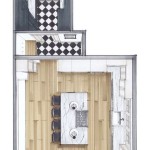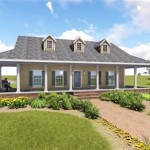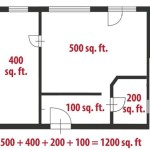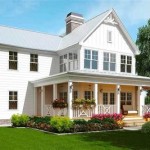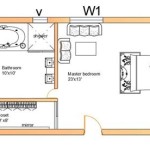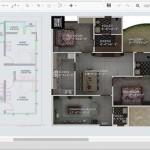Simple DIY Dog House Plans: A Comprehensive Guide
Providing shelter for a dog is a fundamental aspect of responsible pet ownership. A dog house offers protection from the elements, a sense of security, and a personal space for the animal. Constructing a dog house can be a rewarding do-it-yourself (DIY) project, offering customization options to suit the dog's size, breed, and the prevailing climate. This article outlines crucial considerations and provides simple DIY dog house plans to facilitate the construction of a functional and durable shelter.
Before embarking on the construction process, careful planning is paramount. This includes assessing the dog's dimensions, selecting appropriate materials, determining the desired design, and establishing a realistic budget. A well-thought-out plan will ensure a smoother construction process and a more satisfactory outcome. Furthermore, adherence to local building codes and regulations, if any, is essential to avoid potential legal issues.
Determining the Appropriate Size and Design
The size of the dog house is arguably the most important factor to consider. A house that is too small will be uncomfortable and restrictive, while one that is too large will not provide adequate insulation. The ideal size should allow the dog to stand up, turn around, and lie down comfortably, but without excessive empty space.
To determine the appropriate dimensions, measure the dog's height from the ground to the top of its head while standing. Add several inches to this measurement for headroom. Then, measure the dog's length from its nose to the base of its tail while lying down. Add a few inches to this measurement to determine the depth of the house. The width of the house should be sufficient to allow the dog to turn around comfortably, typically one and a half times the width of the dog's shoulders.
The design of the dog house is also crucial. A simple A-frame or rectangular box design is generally sufficient for most breeds and climates. However, consider adding features such as an overhanging roof to protect the entrance from rain and snow. In colder climates, an insulated floor and walls, along with a smaller entrance, can help retain heat. A raised floor can prevent water accumulation and improve ventilation. In warmer climates, ventilation is more important, and larger windows or vents can be incorporated into the design. Avoid complex designs with multiple levels or intricate detailing, as these can be more difficult to construct and may not offer any significant added benefit to the dog.
The entrance size needs to be large enough for the dog to enter and exit easily but small enough to minimize heat loss during colder months. A good rule of thumb is to make the entrance approximately two-thirds of the dog's height at the shoulders. The entrance should also be offset to one side of the house to provide a sheltered area within.
Selecting the Right Materials and Tools
The choice of materials will significantly impact the durability, weather resistance, and overall cost of the dog house. Common materials include wood, plywood, and plastic. Wood is a popular choice due to its availability, affordability, and ease of workability. Untreated lumber, such as pine or fir, is suitable for the frame, while exterior-grade plywood is ideal for the walls, roof, and floor.
Pressure-treated lumber is not recommended for the interior of the dog house, as it can contain chemicals that are harmful to dogs. If pressure-treated lumber is used for the base to prevent rot, it should be completely sealed and covered with a dog-safe material such as untreated wood or a durable, non-toxic sealant. Plywood should be at least ½ inch thick for adequate strength and weather resistance. Exterior-grade plywood is water-resistant but should still be painted or sealed for maximum protection.
Plastic dog houses are lightweight, easy to clean, and resistant to rot and insects. However, they may not provide as much insulation as wood and can be more expensive. If opting for plastic, ensure that it is a durable, UV-resistant material designed for outdoor use.
In addition to the primary building materials, consider using insulation to improve the dog house's thermal performance. Rigid foam insulation is an effective option for the walls and roof. It is lightweight, easy to cut, and provides excellent insulation. Reflective foil insulation can also be used to reflect heat away from the dog house during warmer months.
The necessary tools for this project typically include a circular saw, jigsaw, drill, measuring tape, level, hammer, screwdriver, and safety glasses. A miter saw can be helpful for making accurate cuts, but it is not essential. A staple gun can be used to attach insulation and roofing materials. Always prioritize safety when using power tools, and wear appropriate protective gear.
Fasteners, such as screws and nails, should be galvanized or stainless steel to prevent rusting. Use exterior-grade wood glue to reinforce joints and seams. Caulk can be used to seal gaps and prevent water from entering the dog house.
For roofing, consider using asphalt shingles, metal roofing, or rolled roofing. Asphalt shingles are relatively inexpensive and easy to install. Metal roofing is more durable and long-lasting but can be more expensive. Rolled roofing is a flexible option that is easy to cut and install. Regardless of the roofing material, ensure that it is properly sealed to prevent leaks.
Step-by-Step Construction Guide: A Simple A-Frame Dog House
This section provides a detailed, step-by-step guide to constructing a simple A-frame dog house. This design is relatively easy to build and provides good protection from the elements.
Step 1: Cut the Materials
Based on the dog's measurements and the chosen design, cut the lumber and plywood to the required dimensions. For a medium-sized dog, the following dimensions can be used as a starting point:
* Base: 36 inches wide x 48 inches deep * Side Walls: Two pieces of plywood, each 36 inches wide x 30 inches high (angled at the top to form the A-frame) * Front and Back Walls: Cut to fit the triangular shape of the A-frame, accounting for the entrance on the front wall. The front wall should have an opening approximately 12 inches wide x 18 inches high. * Roof: Two pieces of plywood, each 36 inches wide x 48 inches deep. * Frame: 2x4 lumber for the base and support structure.Step 2: Assemble the Base
Construct the base using 2x4 lumber. Cut four pieces of lumber to form a rectangular frame (36 inches wide x 48 inches deep). Secure the corners of the frame using screws or nails. Consider adding additional support beams across the frame for added strength. Attach a plywood base to the frame using screws or nails. Ensure that the base is level and stable.
Step 3: Build the Side Walls
Attach the plywood side walls to the base frame. Ensure that the walls are flush with the edges of the base. Secure the walls to the frame using screws or nails. Use wood glue to reinforce the joints. Ensure the angled tops of the side walls are aligned correctly to form the A-frame shape.
Step 4: Construct the Front and Back Walls
Cut the front and back walls to fit the triangular shape of the A-frame. The front wall should have a cutout for the entrance. Reinforce the edges of the entrance with additional lumber to prevent splintering. Attach the front and back walls to the side walls using screws or nails. Use wood glue to reinforce the joints. Ensure the walls are securely attached and aligned correctly.
Step 5: Install the Roof
Attach the plywood roof panels to the top of the A-frame. Ensure that the roof panels overlap slightly at the peak to prevent water from entering. Secure the roof panels to the side walls and front/back walls using screws or nails. Use wood glue to reinforce the joints. Consider adding an overhang to the roof to protect the entrance from rain and snow.
Step 6: Add Insulation (Optional)
If desired, install insulation between the frame and the plywood walls. Cut rigid foam insulation to fit the spaces between the frame members. Secure the insulation using construction adhesive or staples. Ensure that the insulation is properly sealed to prevent moisture from entering.
Step 7: Seal and Finish the Dog House
Apply a coat of exterior-grade paint or sealant to the entire dog house. This will protect the wood from the elements and extend its lifespan. Pay particular attention to the joints and seams, and use caulk to seal any gaps. Ensure that the paint or sealant is non-toxic and safe for animals.
Step 8: Add Roofing Material
Install the chosen roofing material (asphalt shingles, metal roofing, or rolled roofing). Follow the manufacturer's instructions for proper installation. Ensure that the roofing material is securely attached and sealed to prevent leaks.
Step 9: Add Finishing Touches
Sand any rough edges or splinters. Add trim around the entrance to give it a more finished look. Consider adding a door flap to provide additional protection from the elements. Place a comfortable bed or blanket inside the dog house for the dog to sleep on.
By following these simple DIY dog house plans and considering the specific needs of the dog, a functional and comfortable shelter can be constructed, providing a safe and secure space for the animal to rest and seek refuge from the elements.

14 Diy Dog Houses How To Build A House Plans 56 Off

13 Diy Doghouse Plans And Ideas The House Of Wood

13 Diy Doghouse Plans And Ideas The House Of Wood

Luxury Plans For Dog House Check More At Http Www Jnnsysy Com Diy

Large Dog House Plans Free Construct101

How To Build A Custom Insulated Dog House Ron Hazelton

15 Free Dog House Plans Puppy Leaks

Easy Diy Dog House Plans Outdoor

8 Diy Dog House Ideas For Crafty Pas

10 Diy Dog Houses That You Can Build Easily
Related Posts

